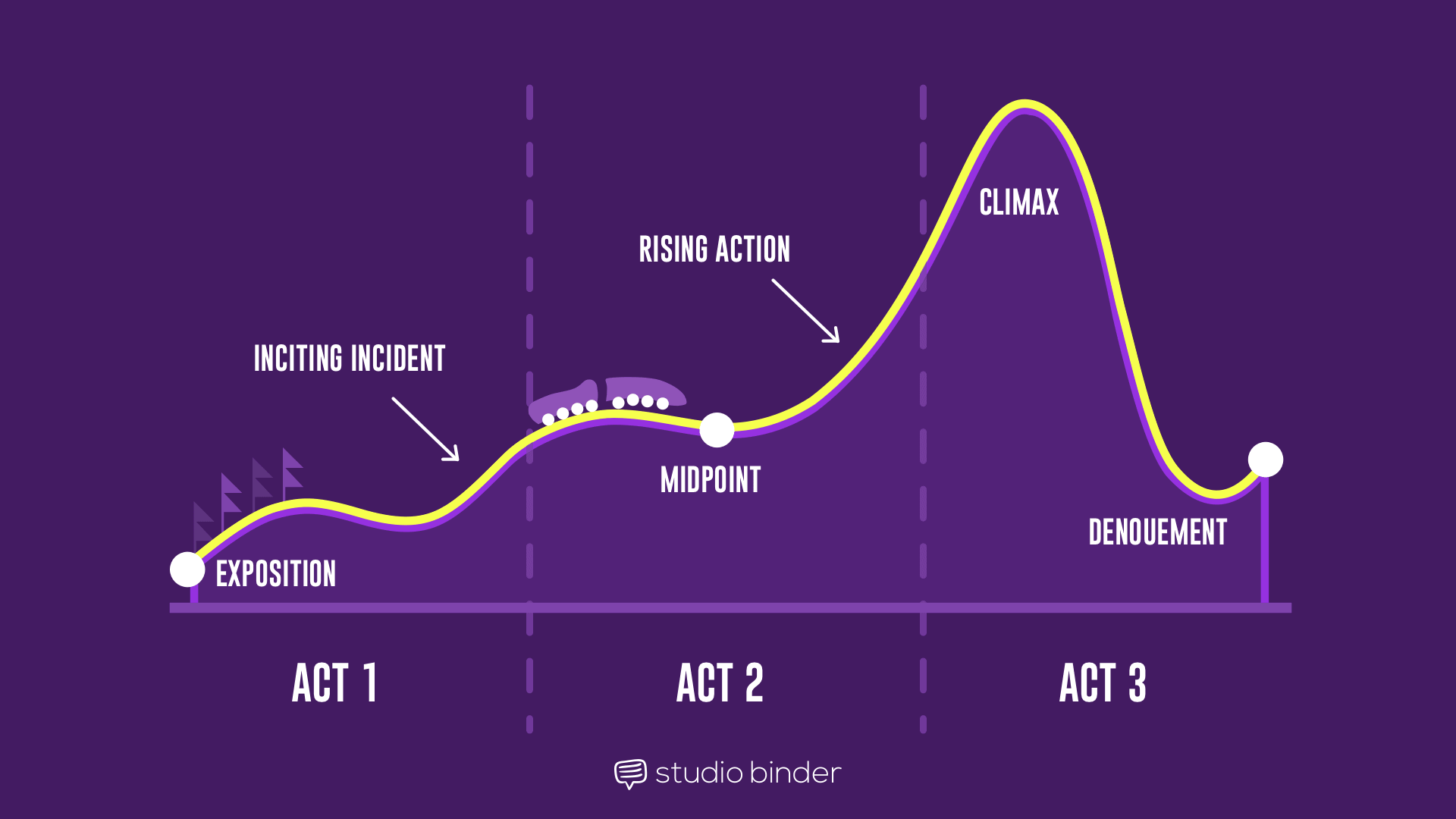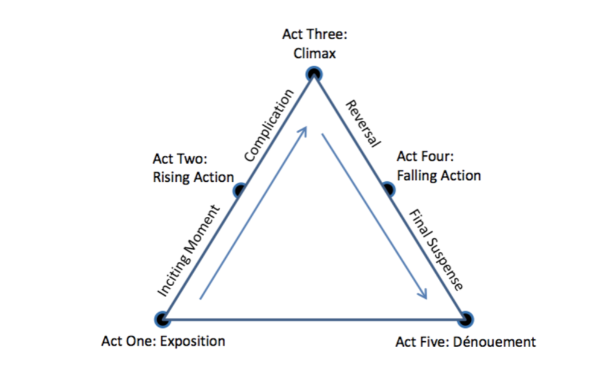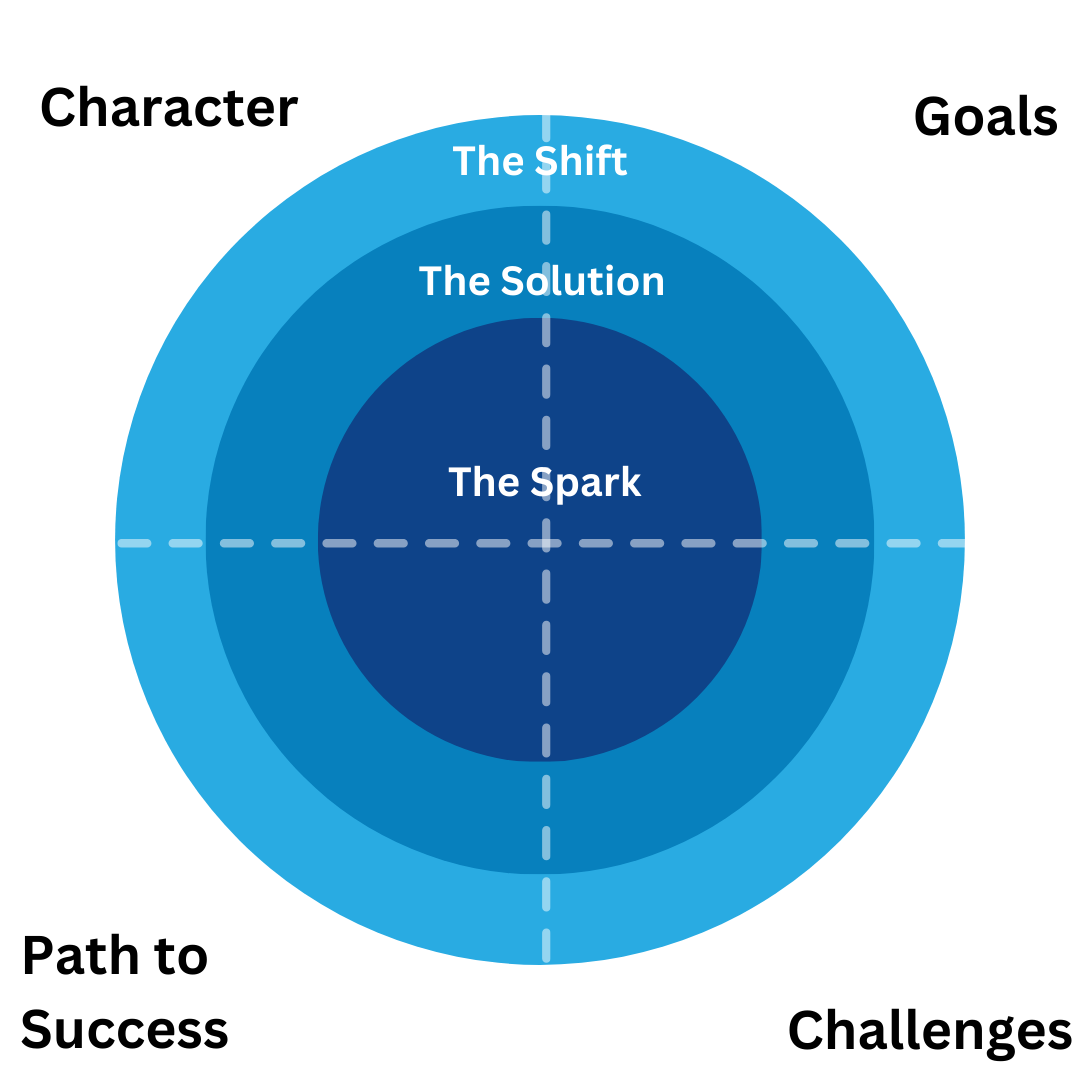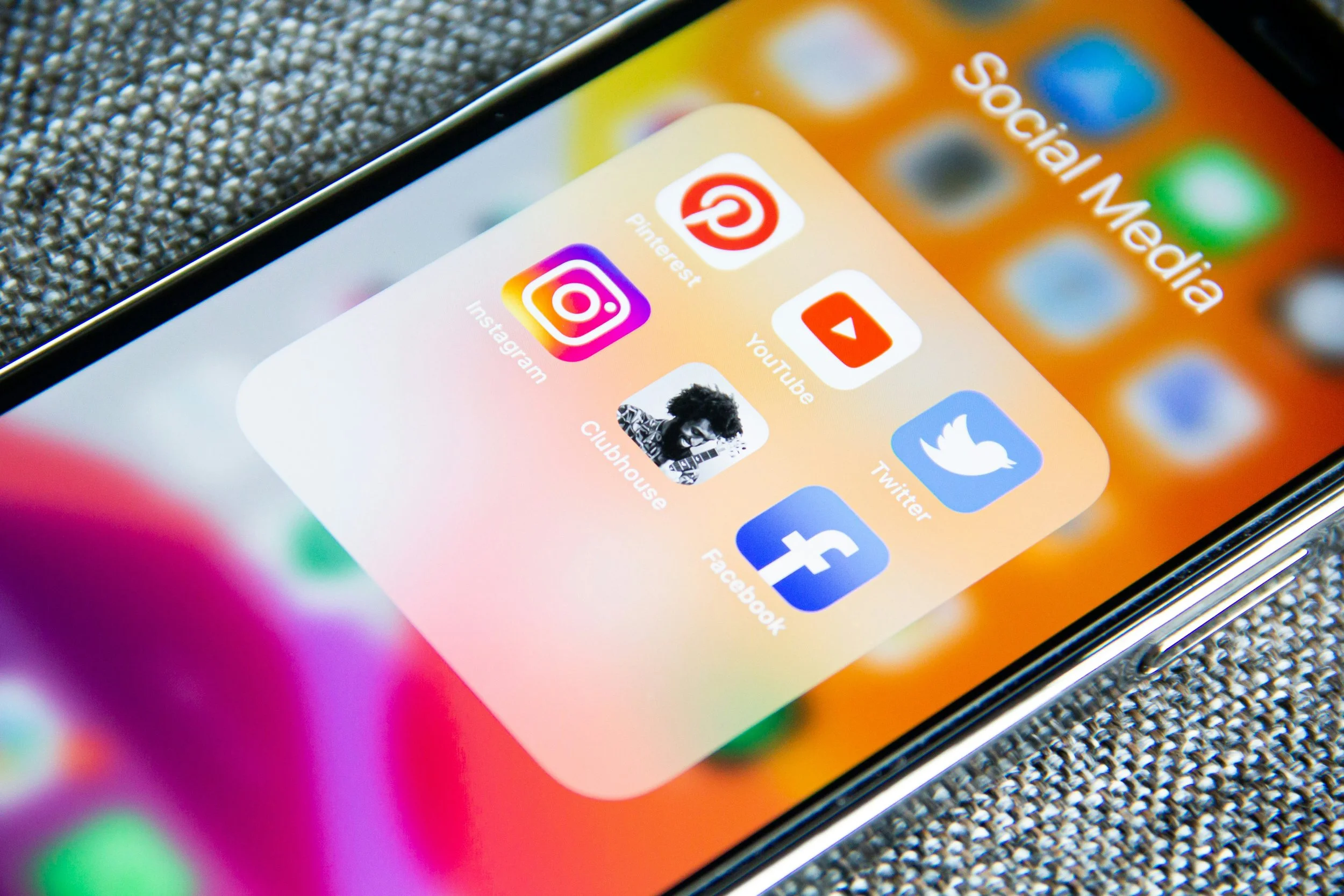The Problem with Telling Better Stories
“Just tell better stories.”
It’s the advice everyone gives, but rarely explains.
It’s kind of like telling someone to “sing from the heart” when they can’t find the key.
The intention is there, but the structure is missing.
Whether you’re a marketer, founder, content creator, or creative, storytelling is now part of your job. You already know it’s powerful. You’ve done the research, heard the TED talks, maybe even dabbled in frameworks like the Hero’s Journey or the Three-Act Structure.
But when you actually sit down to use them, you find yourself struggling to communicate something meaningful, and it can feel overwhelming. The irony? Storytelling, which is supposed to bring clarity, often brings confusion.
That’s because not all stories are designed to do the same thing.
Some are made to immerse your audience in a rich, emotional journey. Others are built to deliver a message in under 30 seconds. Some shape your brand’s identity. Others get someone to click “buy now.”
And when you don’t know which type of story you’re trying to tell, it’s easy to misuse the wrong structure, or worse, tell a story that doesn’t land at all.
That’s why I created this guide.
It’s not about teaching one “perfect” way to tell a story.
It’s about helping you understand which story structure fits your goal.
We'll start by looking at where story structures came from. Then we’ll explore the four major categories of story:
Long-Form Stories (Novels, Films, Myths)
Short-Form Stories (Ads, Shorts, Speeches)
Brand Narratives (Strategy & World-Building)
Content Stories (Social, Blogs, Campaigns)
Each with their own purpose, rhythm, and emotional weight.
Finally, I’ll introduce the Brand Story Arc, a hybrid framework I created to help purpose-driven brands connect the dots between origin, value, and impact.
By the end, you’ll understand why storytelling isn’t about copying someone else’s script; it’s about choosing the right tool to communicate what matters most.
Photo by Vitor Paladini on Unsplash
The Origin of Story Structures: Patterns Observed, Not Invented
Let’s start at the beginning.
Storytelling is not something that marketers or screenwriters created. It was observed.
The earliest stories were oral traditions, shared across generations through myths, poems, songs, and parables. Over time, patterns began to emerge. People began to notice that certain rhythms, progressions, and arcs were more compelling than others.
One of the earliest recorded observations came from Aristotle, who in Poetics (circa 335 BC), described that every story must have a beginning, middle, and end. It seems simple, but this foundational insight remains the backbone of every story structure that follows.
Much later, in 1979, Syd Field took this idea and made it usable for modern writers in his book Screenplay: The Foundations of Screenwriting. He introduced the Three-Act Structure, breaking the story into more actionable beats: Setup, Confrontation, and Resolution. Field’s influence on Hollywood storytelling cannot be overstated. His framework still drives the majority of screenplays today.
The important thing to remember is this: The people who talk about story structures didn’t invent the story. They just documented what already worked.
And what worked? Stories that helped us:
Engage and be entertained
Provoked emotion and thought
Conveyed meaning or truth
Whether short or long, these goals are universal. The format is what changes, and each has different purposes, structures, and emotional weight. Let’s dive in.
Photo by Pixabay: https://www.pexels.com/photo/black-classic-camera-near-brown-leather-bag-37397/
1. Long-Form Stories: Going On A Journey In A New World
Long-form storytelling is about immersion. It creates an expansive emotional and intellectual journey for the audience. Think novels, movies, or plays.
These stories aren’t meant to deliver a single message; they explore different messages and themes, and build entire worlds. They take time to unfold, giving space for character growth, subplots, emotional highs and lows, and deep thematic exploration.
Take one of my favourite movies, The Matrix, for example. On the surface, it’s a sci-fi action movie, but underneath, it explores existential questions about reality, control, choice, and freedom. These themes are slowly revealed through a series of meaningful moments.
Key Intentions of Long-Form Storytelling:
Show a complete transformation: Neo evolves from a confused hacker to the prophesied “One”. We watch him wrestle with belief, identity, and agency.
Build an immersive world: The Matrix universe is richly imagined; machines, simulation, resistance, prophecy. Each element deepens the lore.
Explore multiple themes: From the illusion of choice to the nature of reality, The Matrix doesn’t limit itself to one theme.
Sustain emotional investment: Key relationships, like Neo and Morpheus, or Neo and Trinity, anchor the film emotionally, while the plot escalates.
One Core Lesson: Despite having multiple layers, long-form stories ground themselves in having one core lesson. All other elements and themes lead to this lesson, and it gives the story emotional weight. In Matrix, it was; to fully realize your potential, you must break free from the limiting beliefs that define your reality.
This is the beauty of long-form stories: they hold multitudes, but always centre a core lesson or belief.
https://www.studiobinder.com/blog/three-act-structure/
Popular Long-Form Frameworks:
Three-Act Structure – Setup, Confrontation, Resolution. Popularized by Syd Field.
The Hero’s Journey – 12 stages of transformation (Joseph Campbell)
Freytag’s Pyramid – 5-stage arc: Exposition, Rising Action, Climax, Falling Action, Denouement
Fichtean Curve – A series of crises and climaxes (great for thrillers)
Dan Harmon’s Story Circle – A cyclical 8-stage structure: You, Need, Go, Search, Find, Take, Return, Change
Long-form stories are murals. They invite the audience to step into a world, not just observe it. They require patience but reward us with emotional and thematic richness. While long-form stories offer immersive, layered experiences, they also inspired the condensed storytelling patterns we see in short-form work. Many short-form techniques borrow their arcs and emotional beats from these fuller, more expansive narratives, just distilled for quicker impact.
2. Short-Form Stories: Telling a Single, Powerful Message
Photo by Juan Rojas on Unsplash
While long-form stories build worlds, short stories are about impact with brevity.
One main theme or message. They are lean, intentional, and designed for clarity and emotional precision. A well-told short story doesn’t need subplots, vast world-building, or multiple character arcs. It needs focus.
Historically, these appeared in literature, theatre, journalism, and short films. Think about the Aesop or Anansi stories, Cartoon Shorts like Tom and Jerry, or Popeye the Sailor, Comic Strips like Calvin and Hobbes, or even an article in the daily paper. These are self-contained narratives, they can exist on their own without any further explanation. Often designed to evoke an emotion, reveal information or deliver a moral truth in just a few minutes.
Where long-form immerses, short-form interrupts and reveals. It presents a moment of tension, a spark of insight, or a turning point.
Key Intentions of Short-Form Stories
Just like long-form, short-form storytelling serves core human functions. But how it achieves those goals is where it differs:
Deliver a Singular Transformation: Short stories don’t chart a full hero’s journey, they illuminate one moment of shift.
Provoke Deep Emotional Response: Because the form is compact, every line, image, or scene is crafted to heighten emotional impact.
Convey a Focused Theme or Insight: Where long-form can explore many themes, short stories cut with surgical precision.
Leave Space for Interpretation: Often, short stories don’t wrap things up neatly. Instead, they leave the reader or viewer with questions, symbols, or emotions to unpack. They respect the audience’s imagination.
https://www.craftpolish.com/blog/2020/11/4/the-5-point-narrative-how-to-plot-a-short-story
Popular Short-Form Story Structures
Many short stories borrow from classical frameworks, but they adapt the structure to suit a much shorter timeframe. Here are a few common approaches:
3-Act Miniature – Even short stories often have a beginning, middle, and end, but compressed. One scene sets the context, the next introduces tension, and the final line lands the message.
5-Point Narrative - This structure typically unfolds in five stages; exposition, inciting incident, climax, falling action, and resolution, moving from setup and complication through a turning point to the untangling and conclusion of the narrative.
In Medias Res – The story begins mid-action, dropping the audience into the middle of the conflict or transformation. It demands participation and heightens intrigue. This can also be used in long-form, but has been more popularised in shorter formats.
ABT – And, But, Therefore - Establishes two or more key facts (And), introduces tension (But), then offers a resolution (Therefore).
Short-form storytelling may be briefer, but it’s rooted in the same goal as long-form: to create emotional resonance and share meaning. The difference lies in scope. Where long-form builds worlds, short-form captures moments, and this efficiency laid the groundwork for modern content frameworks, which took that storytelling agility and made it repeatable for marketing use.
3. Brand Narratives: A World Created Through Touchpoints
This is where storytelling meets strategy.
Brand narratives aren’t about a single story or a single moment; they are about crafting an ecosystem of meaning. They combine identity, promise, perception, and experience into a unified whole.
Unlike content, which has a single goal, brand narratives are strategic and long-term.
These brand narratives feel like long-form stories in the sense that they have a clear message, but they unfold across platforms and years, through campaigns, experiences, and design.
It's all about world-building through everything the brand touches:
Product packaging tells a story about identity
Customer service reinforces tone and values
Partnerships reveal priorities
Take Apple, for example. Their brand narrative revolves around simplicity, innovation, and elegance. From their ads to their packaging to their keynote events, every touchpoint reinforces the message: "We create beautiful tools that help you think differently." That story didn’t come from a tagline. It came from consistent world-building.
Key Intentions of Brand Narratives:
Shape perception: Every story told, and every action taken, feeds into how the audience feels about the brand.
Build trust through consistency: Great brand narratives don’t change with every campaign. They evolve while staying true to a core identity.
Embed values into experience: The brand isn’t just what it says. It’s what it does.
https://www.gravityglobal.com/blog/complete-guide-storybrand-framework
Popular Brand Story Frameworks:
Simon Sinek’s Golden Circle: Start with purpose, not product: Why (Purpose), How (Process), What (Product)
Donald Miller’s StoryBrand: Clarify your message by positioning the customer as the hero and your brand as the guide: Character, Has a Problem, Meets a Guide, Who Gives Them a Plan, And Calls Them to Action, That Helps Them Avoid Failure, And Ends in Success
Park Howell’s Story Cycle: Backstory, Hero, Stakes, Disruption, Antagonists, Mentor , Journey, Victory, Moral, Ritual
The Brand Story Arc (My Model): A modern hybrid model that identifies the 4 important elements of every brand narrative: character, goal, challenge and path to success and uses them to create the three important stories your brand needs to know how to tell:
The Spark – Your Origin Story
The Solution – How You Create Value
The Shift – The Bigger Impact You Enable
Brand Story Arc TM
Each of these frameworks gives brands a blueprint to define their message, connect emotionally, and scale their story across platforms. Brand narratives owe much to long-form storytelling. Like novels and films, they aim to build emotional worlds and sustained meaning, but instead of pages or scenes, they use content, design, and experience. Content becomes one of the short-form executions of the brand’s long-form world. It’s through this interaction between narrative depth and storytelling touchpoints that strong brands come alive.
4. Content Frameworks: Short Stories in Service of a Larger Message
If brand narratives are the “epic novels” of your business, then content is the series of short stories and scenes that keep your audience engaged day-to-day. It’s the drip-feed of value, the consistent storytelling that reinforces your brand narrative, one post, video, or article at a time.
But let’s clear something up: not everything your brand produces is “content.” Content in this context refers to intentional communication pieces designed to educate, entertain, inspire, or convert. Your brand packaging, or customer service help to tell your brand narrative, but isn’t content. Content is delivered through formats like; social media posts, videos, emails, blogs, and landing pages to name a few.
Key Intentions of Content Frameworks
Grab Attention Quickly: On social media or in email inboxes, your message competes with everything else in your audience’s world. The opening must hook.
Deliver Value Fast: People don’t have time to search for the point. Content should quickly get to the “what’s in it for me?”
Guide to Action: Great content doesn’t just make you feel something, it moves you towards an action: a share, a click, a reply, a buy.
Reinforce the Brand Narrative: Every post, email, or blog should feel like a chapter in your larger brand story. Content tells the brand narrative one page at a time.
Let’s look at some examples in action:
A carousel on Instagram that breaks down a complex idea into 6 digestible slides.
A short YouTube tutorial that shows how to use your product, ending with a soft call to join your email list.
A LinkedIn post that shares a behind-the-scenes moment from your company culture, reinforcing your values.
Each one stands alone, but together, they build trust, demonstrate value, and echo your larger message.
Popular Content Frameworks (and Why They Work)
Because content formats vary, so do the structures. The frameworks below are modular templates, adapted across copy, video, and design formats:
1. PAS – Problem, Agitate, Solution
Identifies a pain point, intensifies the stakes, and offers relief.
2. BAB – Before, After, Bridge
Paints the "before" state, contrasts it with the "after," and shows the bridge (your product or insight).
3. Hook–Build–Payoff (aka Hook–Reveal–Resolve)
Opens with tension, builds context, and lands the twist or takeaway.
4. Problem–Insight–Action (PIA)
Frame a problem, introduce a reframe or insight, then suggest a path forward.
Content Format Matters
Not every framework works the same across every medium. The container shapes the message. For short-form video content you have to hook the audience within the first 3 seconds and keep them visually engaged throughout. Whereas with blogs, the title is your hook, and you can create more intrigue and set-up in the build up, before delivering value.
Content frameworks pull directly from short-form traditions; structured, targeted, and emotionally efficient. But unlike traditional short stories, content always serves a larger brand ecosystem. Every post, video, or blog is a scene in a bigger narrative. When connected to a strong brand narrative, these bite-sized messages don’t just inform, they build trust and identity over time.
How Different Story Structures Can Be Used
Let’s use a fictional character, Maya, a woman who quit her job to start a plant-based café:
Long-form
A novel or film exploring Maya’s full journey: burnout, relationships, discovery, setbacks, and triumph.
Short-form
A short story about the moment Maya chose to walk away from a corporate job to pursue her passion.
Brand Narrative
A brand that champions sustainability, with Maya as the founder, whose origin story and values shape everything from the menu to the packaging.
Content
An Instagram post sharing the lesson Maya learned after her first failed recipe, ending with a CTA to try a new dish.
Choosing the Right Story for the Right Moment
At its core, this guide isn’t just about how to tell better stories.
It’s about understanding which story structure is best suited to your purpose, based on your format and your goals.
In a world flooded with advice, it’s easy to default to the loudest trend. You might be tempted to cram a 12-stage Hero’s Journey into a 30-second Reel or, on the flip side, launch a feature-length brand film with no narrative clarity.
But not every moment calls for a long emotional arc. And not every story can or should be told in a minute. The structure isn’t a rulebook to restrict you. It’s a toolbox to elevate your message and meet your audience where they are.
That’s especially true for marketers.
Understanding story structures allows you to:
Design campaigns with purpose
Use the right emotional pacing for your medium
Craft content that aligns with your brand’s bigger narrative
Turn marketing touchpoints into meaningful story moments
Think of this like music. Long-form stories are full symphonies. Short-form stories are powerful choruses. Brand narratives are concept albums. Content is the beat that keeps people coming back.
When you master the language of each format, you don’t just become a better storyteller. You become a more effective communicator, strategist, and brand builder.
If you’d like a shortcut to putting this into practice, I created a The Brand Story Arc Starter Kit, a guided worksheet that helps you apply structure to your own brand messaging with ease. It’s a great way to start testing which structure best fits your brand.
Now, it’s your turn.
Your audience is already listening. Make sure the story you’re telling is the one they’ll remember.






















